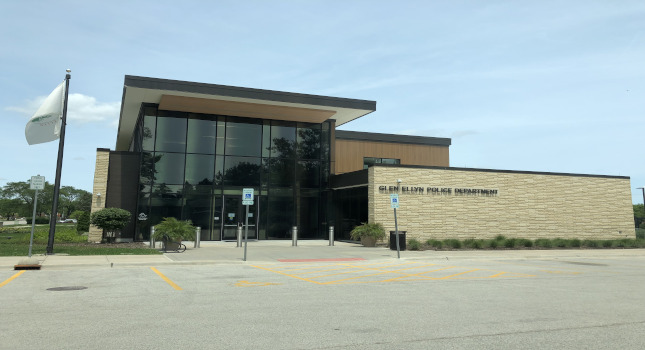What hardened facilities can do for the continuity of critical services
Hardened facilities can continue critical services through natural disasters and man-made threats.
Many of the essential facilities that make up a community, including police and fire stations, hospitals, emergency operations centers and critical utility centers, require an extra level of design considerations to reduce threats from man-made and natural disasters. These additional design considerations are often referred to as hardening a facility.
What classifies a hardened facility
A hardened facility is designed and constructed to survive well beyond a typical office building under potentially catastrophic events. The hardening is required when a service provided at the facility is deemed essential for safety and security of the community in which it’s located. These facilities incorporate more robust exterior enclosures, such as walls, roofs, windows and doors. They are designed to a higher level of structural integrity to reduce effects of hazardous wind-borne debris impacts and seismic loads. They also utilize redundant building systems, electronic access control devices, physical barriers and deterrents. Site design is also key to provide proper blast standoff distances and to clearly define secure and public zones.
Three essential aspects of hardened facilities
1. Hardened buildings
In general, regardless of the code specifics, the building support structure and enclosure need to incorporate protective materials and system design, including hardened wall construction, specialized glazing systems, protective intake ventilation, and other measures deemed necessary based on the level of threat determined. Based on the code specifications, the design may also address blast requirements, impact protection, wind speed determination, lateral load bracing, seismic loads, snow loads, rain loads and other envelope design systems.
2. Redundant building systems
All building systems, including HVAC, power, water, sewer, communications and security, must have the appropriate level of redundancy to meet the required level of service in a hardened facility. To accomplish this, emergency generators fueled by aboveground fuel tanks with protective enclosures and automatic transfer switches provide continuous power. All pumps, HVAC equipment and other equipment have appropriate hardened enclosures to provide protection from hazardous wind-borne debris. Duct banks for communication and data lines are utilized to harden infrastructure as well. Multiple fresh water sources and alternative sewage storage solutions are also a key aspect of the redundant systems required.
3. Hardened perimeters
Facilities must maintain secure perimeters through the use of proper fencing, access control gates and doors, elevated planters, benches, raised plinths and grade changes to prevent unauthorized pedestrian and vehicular access. A hardened facility properly designed using Crime Prevention Through Environmental Design (CPTED) principles reduces threats by using a combination of active and passive devices and design strategies. Built environment implementations of CPTED seek to minimize man-made threats by manipulating the built environment around the facility. The six main concepts for CPTED are territoriality, natural surveillance, access control, image/maintenance, activity support and target hardening. Applying all of these strategies is a key component of a hardened facility.
Hardening the Hillsborough Public Safety Operations Complex
Another example of facility hardening is the Hillsborough Public Safety Operations Complex in Florida, which is designed to be fully functional during a Category 5 Hurricane. The complex, including its building envelope and associated structures, was designed to meet heightened wind speeds of 200 mph and wind-borne debris “Level E” large missile impact. The design-build team, which included Dewberry as Architect of Record, designed exterior walls as tilt-up concrete construction to comply with the hardening requirements of in a cost-effective manner. The aluminum doors, frames, and windows were designed and specified with “Level E” large missile impact-resistant insulated laminated glazing, fully tempered with manufacturer’s Notice of Acceptance (NOA). A composite roof design was used with increased structural members and concrete to complete the survivable envelope in conjunction with the exterior walls and openings.
Additionally, the design-build team accounted for the continuity of its building systems. This included specifying emergency generators with automatic transfer switches to provide 72 hours of continuous power in the event of a power failure. The project includes a Communication Public Safety Answering Point (i.e. 911) that requires redundant HVAC systems and uninterrupted power source back to cover momentary power loss during transfer. Redundant feeds for data from two distinct service points guarantee Communication PSAP is protected. All HVAC equipment and pumps at the exterior central energy plant are surrounded by concrete tilt-up panels and an expanded metal mesh with galvanized steel roof structure to provide protection from wind-borne debris. An aboveground tank provides fresh water for the building. A below-grade sewage storage tank provides continuous service during an emergency operations center activation in the event of a power outage or if the line out is broken and may also require generator back up.
When planning and designing for facilities that provide essential community services, it’s critical for the project owner and project team to evaluate code requirements and potential risks to man-made and natural disasters. Facility hardening is particularly crucial for coastal communities and ones that may be impacted by climate change factors. Wherever there is a safety, security, or continuity of services risk, facility hardening design can help prepare a community for future disasters.
This story originally appeared on Dewberry’s website. Dewberry is a content partner of CFE Media.
Original content can be found at www.dewberry.com.
Do you have experience and expertise with the topics mentioned in this content? You should consider contributing to our CFE Media editorial team and getting the recognition you and your company deserve. Click here to start this process.


